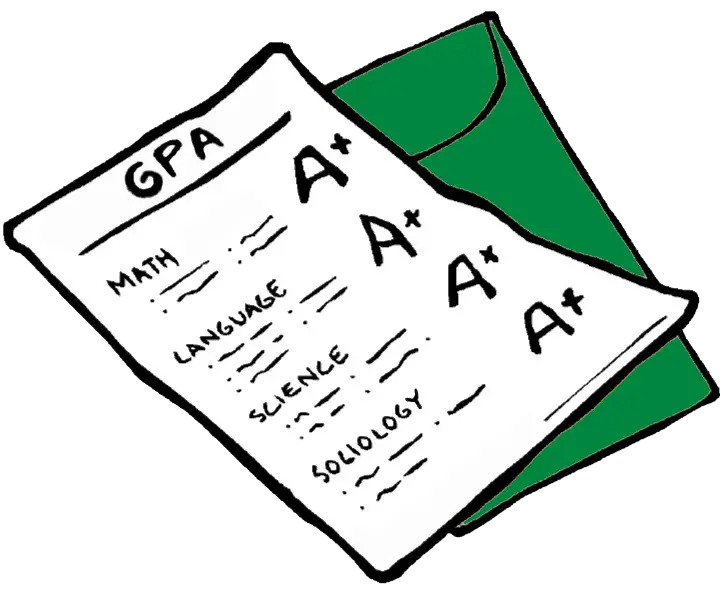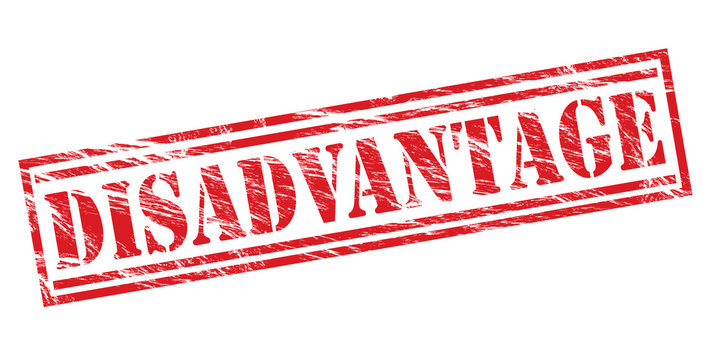Grading in schools and universities in an attempt to apply standardized measurements of achievement in a course. It is essential to assess a student’s marks, percentiles and academic achievements. Thus, it is one of the first things an interviewer views on your resume. Additionally, if you intend to apply for further studies abroad, your grades are a determining factor in securing a position at the university. In this article, we will shed some light on the different grading systems, particularly the CGPA grading system.
- What is the purpose of a grading system?
- What are the qualities of a good grading system?
- Types of Grading Systems
- What is CGPA?
- What is GPA?
- Difference between GPA and CGPA
- What is the percentage grading system?
- How to convert CGPA to a percentage?
- CGPA conversions for different universities in India
- How to convert Percentage to CGPA?
- Advantages of the CGPA grading System
- Disadvantages of the CGPA grading system
- FAQs
What is the purpose of a grading system?

1. The primary goal of any grading system is to accurately, fairly and consistently convey the learning progress and achievement of students to their families, future institutions, and prospective employers.
2. A grading system ensures that students, teachers, families and advisors have the correct detailed information required to make important decisions regarding the student’s education.
3. A grading system measures and records a student’s progress and ability against predetermined cross-curricular as well as content-specific standards. In addition, grading systems also consider the learning objectives developed by faculty or administration.
4. All academic progress and achievements are documented separately from work habits and traits as well as behaviours of the student. Thus, educators or advisors can accurately differentiate between learning needs and behavioural or work-habit needs.
5. A grading system ensures fairness and consistency in the examination of the student. All students are scored against the same learning standards irrespective of their experiences, teachers, content area etc.
6. The grading system is not used as punishment or for control, or compliance.
7. Grading systems motivate students to work harder and overcome failures in order to excel academically.
What are the qualities of a good grading system?

The following qualities are a must in any good grading system.
1. A good grading system clearly and accurately communicates results to students, teachers and parents.
2. A good grading system ensures fairness and consistency in all assessments of learning.
3. Furthermore, a good grading system recognises which students need special attention and are unable to cope up with their studies.
4. A good grading system measures academic advancement separately from behaviour and character traits.
5. A good grading system does not demotivate students. Instead, it helps them understand their aptitude and thus, excel academically in their field of interest.
Types of Grading Systems
There are 7 types of grading systems used in schools and universities all over the world.
1. Letter grading and its variations: Most schools and universities use letters from A to G to signify academic achievement. Usually, a letter grade is allotted a number on a 4 or 10 point scale.
2. Norm-referenced grading: This refers to comparing students with each other via letter grades to determine academic ability.
3. Percentage Grading: Grading courses from 0 to 100 Percent
4. Mastery grading: Here students are labelled “masters” or “passers” when their achievement arrives at a prespecified level
5. Pass/Fail: Using common terms such as Pass or Fail to indicate academic ability
6. Standards grading: This refers to comparing student performance to a pre-established standard of performance.
7. Narrative grading: Here, educators evaluate students by writing comments about their performance
What is CGPA?
Cumulative Grade Point Average or CGPA is an academic grading system. It is used in schools and universities to measure the overall academic performance of a student. Firstly, students are allotted grades (A, B, C, D, or F) depending on their performance. Each alphabet is assigned a particular number on a scale of 10, also known as grade points. Then, an average of the grade points obtained for all semesters is calculated. This is known as the CGPA of a student.
What is GPA?

A Grade Point Average or GPA is a number that indicates the score of a particular course. A grade point can be a letter or a number. For example, if the grade is A the GPA would be 4. Similarly, if the grade is B then the grade point goes to 3. The scale keeps moving according to the grading system.
There are several ways of estimating a grade point. Let us see how to calculate the GPA:
For example, the student picks 3 courses with 3 credits each. The grade, as well as the GPA allotted to each subject, is mentioned below.
Subject 1- A (4 on GPA scale), Subject 2- C (2 on GPA scale), Subject 3- B (3 on GPA scale)
Then, multiply the grade with the credits. For example, if we add up these numbers, the total grade point is 27 and if we divide it by the total credits, which is 9, we get 3. 3 is the final GPA.
Another thing to note is that GPA calculation may change depending on what country or institute the student is from.
Difference between GPA and CGPA

Although both GPA and CGPA measure the performance of a student, there is actually a difference between them. The primary difference between the two is that CGPA calculates the overall performance of the student throughout the course (including all units and semesters), while GPA estimates the performance of the student in a single unit or semester.
To help further understand the key difference, we have listed some pointers below:
Meaning
GPA is used for a single semester while CGPA accumulates the total marks and credits across all the semesters.
Time Period
GPA is for a short time period, like for a semester or a term. While CGPA covers a longer academic duration, for example, the entire period of a college degree including all the semesters.
Inter-relatedness
As CGPA combines the grades of all semesters, the student needs to have a good grade point in each and every semester in order to score a good average for the degree. Thus, both GPA and CGPA are connected with each other.
Emphasis
If the student is applying for higher studies in overseas universities, he or she may need to submit the GPA of each semester. This is because, universities assess the consistency of the student throughout the course duration and thus, lay less emphasis on the CGPA, which is more emphasised upon in Indian universities.
What is the percentage grading system?

Most Indian schools and universities follow a percentage grading system. A percentage grading system is one where the marks obtained during the semester or course are converted into percentages and then divided into the different divisions of ranks. The division is as follows.
- 75% – Distinction
- 60-75% – First Division
- 50-60% – Second Division
- 40-50% – Third Division.
How to convert CGPA to a percentage?

Since many universities use percentages, it is important to know how to convert a CGPA grading system into a percentage one. We have made it easier by listing the procedure below.
How to convert CGPA into a percentage?
In this example, we consider,
Number of courses- 5
Grade points of each subject:
Subject 1- 9, Subject 2- 10, Subject 3- 8, Subject 4- 7, Subject 5- 8
Steps
1. First, add the grade points or of all 5 subjects. Thus, adding all the subject grade points ( 9+ 10 + 8 + 7 + 8) will give you 42.
2. After adding the grade points, divide the total by the number of subjects. That is, 42/5 which is equal to 8.4
3. This is the CGPA of 5 subjects
4. Multiply the CGPA with 9.5 to convert it to a percentage. Thus, on multiplying 8.4 and 9.5, we will get 79.8%.
This formula is used by CBSE to convert grades into percentages. However, the result is only an approximation and is not exact.
Why do we multiply the CGPA with 9.5?
Multiplying the CGPA with 9.5 is determined after observing the results for the last five years. We have noticed that the average comes out to be close to 95 marks. Since the equivalent grade point for then range 91-100 marks is 10, we obtain 9,5 when we divide the average result of 95 by 10.
GPA To Percentage Grade Conversion Table
Below is a table giving the percentage for every grade point.
| CGPA | Percentage |
| 10 | 95 |
| 9.9 | 94.05 |
| 9.8 | 93.1 |
| 9.7 | 92.15 |
| 9.6 | 91.2 |
| 9.5 | 90.25 |
| 9.4 | 89.3 |
| 9.3 | 88.35 |
| 9.2 | 87.4 |
| 9.1 | 86.45 |
| 9 | 85.5 |
| 8.9 | 84.55 |
| 8.8 | 83.6 |
| 8.7 | 82.65 |
| 8.6 | 81.7 |
| 8.5 | 80.75 |
| 8.4 | 79.8 |
| 8.3 | 78.85 |
| 8.2 | 77.9 |
| 8.1 | 76.95 |
| 8 | 76 |
| 7.9 | 75.05 |
| 7.8 | 74.1 |
| 7.7 | 73.15 |
| 7.6 | 72.2 |
| 7.5 | 71.25 |
| 7.4 | 70.3 |
| 7.3 | 69.35 |
| 7.2 | 68.4 |
| 7.1 | 67.45 |
| 7 | 66.5 |
| 6.9 | 65.55 |
| 6.8 | 64.6 |
| 6.7 | 63.65 |
| 6.6 | 62.7 |
| 6.5 | 61.75 |
| 6.4 | 60.8 |
| 6.3 | 59.85 |
| 6.2 | 58.9 |
| 6.1 | 57.95 |
| 6 | 57 |
| 5.9 | 56.05 |
| 5.8 | 55.1 |
| 5.7 | 54.15 |
| 5.6 | 53.2 |
| 5.5 | 52.25 |
| 5.4 | 51.3 |
| 5.3 | 50.35 |
| 5.2 | 49.4 |
| 5.1 | 48.45 |
| 5 | 47.5 |
| 4.9 | 46.55 |
| 4.8 | 45.6 |
| 4.7 | 44.65 |
| 4.6 | 43.7 |
| 4.5 | 42.75 |
| 4.4 | 41.8 |
| 4.3 | 40.85 |
| 4.2 | 39.9 |
| 4.1 | 38.95 |
| 4 | 38 |
CGPA conversions for different universities in India
VTU CGPA to percentage calculator
For VTU students the CGPA to Percentage formula is quite different from the standard CBSE provided. For the year 2019-2020, the formula set by VTU is as follows:
CGPA to Percentage VTU
Percentage= [CGPA-0.75] * 10
Gujarat Technological University (GTU) CGPA to percentage calculator
Gujarat Technological University provides a comprehensive conversion standard to get the percentage from CGPA, CPI or SPI. Students may calculate CGPA to Percentage using the formula:
Percentage: [(CGPA/SPI/CPI-0.5)] *10
Delhi University (DU) CGPA to percentage calculator
Delhi University released an official notification was released on 11th January 2018 with the formula to calculate percentage from CGPA. It is:
Final Percentage of the student = 9.5 * CGPA
Mumbai University (MU) CGPA to percentage calculator
The conversion system for CGPA to Percentage has specified various point scales for different programs. Here are the main pointers provided by MU:
For programs in the discipline of Pure Sciences, Arts and Commerce, as well as the related disciplines, a 7-point scale is used. This estimates the percentage of marks obtained by the student.
For Engineering, on the other hand, the CGPA to Percentage conversion is accomplished through the 10 Point Grading System which is,
Percentage= 7.25 * CGPA +11
Anna University CGPA to percentage calculator
Anna University’s CGPA to Percentage table can be found on the university website (here).
KTU CGPA to Percentage calculator
The calculation system created by KTU is quite simple. The formula is specified for determining CGPA and converting it to percentage is as follows:
CGPA= Sum of (Ci*GPi)/ Sum of (Ci)
Where,
Ci refers to the credit assigned to a certain course, and
GPI is the grade point for that subject
Then, the percentage is calculated using:
Percentage = 10*G
where G is CGPA or SGPA
Maulana Abul Kalam Azad University of Technology (MAKAUT) CGPA to percentage calculator
MAKAUT follows a 7-point grading system. The conversion used is quite similar to that of VTU. It is:
Percentage= [CGPA-0.75]* 10
How to convert Percentage to CGPA?
To convert a percentage to CGPA, one must divide the percentage by 9.5. The resulting number is the CGPA.
For example, if the percentage obtained is 70%, then, by dividing it by 9.5 we get 7.3 CGPA out of 10.
CGPA to Percentage Conversion for UPSC
UPSC asks candidates to submit their percentage obtained at the undergraduate level. Thus, if the university has provided CGPA or grades then the equivalent percentage of marks is calculated using the method specified by UPSC. It is as follows,
For example, if the student had obtained a 7.0 CGPA out of 10 then, to convert the CGPA to the percentage simply multiply it by 10. Hence the percentage will be 70%.
Advantages of the CGPA grading System

1. The CGPA system has reduced the pressure of scoring high marks as the marks are not given on the student report cards. In addition, the student can focus on holistic development in academics instead of single-mindedly trying to score the highest.
2. Attention to different subjects can be given per the grades. Furthermore, the capability and performance of students in subjects can be determined easily.
3. Students can be divided into different categories based on their performance. Hence, the teacher or educator can pay individual attention to different groups of students accordingly.
4. A grade provides the students with a clear understanding of their strengths and weakness in academics.
Disadvantages of the CGPA grading system

1. The CGPA grading system eliminates the sense of competition which is the primary motivation for some students. By removing competition, students may aim only to clear the grades and not score higher.
2. The results are not accurate. In the CGPA grading system, a score of 91 marks as well as 100 marks are both a grade of A1. Similarly, a score of 89 is A2, while a score of 92 is A1 which is a significant difference in the grade but in actuality only differs by 3 marks in reality.
3. In the CCE system by CBSE, activities and projects are also responsible for the grades of a student. Thus, a student can obtain higher grades by simply performing better in activities and not in examinations.
FAQs
1. What are the advantages and disadvantages of grading systems?
Advantages of grading systems
- Grading systems help determine the Strengths and weaknesses of the student.
- It allows students to understand which subjects they need to improve on.
- Teachers can find out students find their subject difficult and hence, can give them special attention if required.
Disadvantages of Grading Systems
- Students are highly demotivated if they score less than expected.
- Grading increases room for comparisons among students.
- Students often focus on obtaining a massing mark instead of understanding the concepts.
2. What percentage is 7.4 CGPA?
The percentage of 7.4 CGPa can be calculated by multiplying it by 9.5. Therefore, the final percentage is 70.3%.
3. What is the CGPA of 76%?
We can calculate the CGPA by dividing 76 by 9.5. Thus, the CGPA is 8.
4. What percentage is 9.2 CGPA?
To calculate 9.2 CGPA to percentage marks, we multiply it by 9.5. Hence, the result is 87.4.
5. What is the difference between the Indian and US CGPA system?
The grade point average in the United States is determined using a four-point system. In India, on the other hand, a ten-point or 7 points grading system is used. In addition, depending on the university’s criteria, the percentages can always be converted to GPA scores.
6. What is the difference between CGPA and the percentage grading system?
- A CGPAis the average of the grade points obtained in each subject. A percentage on the other hand is the absolute score of the individual.
- As CGPA is used in most universities around the world, it is the preferred grading system. Percentage marks are used only by a few countries like India and Spain.
- CGPA may promote healthy competition, unlike percentages.
7. What are some online calculators to convert CGPA to a percentage?
There are several online calculators available to convert CGPA to percentages. Here are some by gdx, uniformapp and embibe.
8. Is 68 a first-class degree?
In India, a 68 is a first-class degree (60-75%). In the UK, a 68 is an upper second class, which is equivalent to a grade of B or B+. On the other hand, in the US, a 68 is a D.
9. How to can you convert an Indian 10 point CGPA to a US 4 point GPA?

As mentioned above, India’s CGPA system is quite different from the US GPA. To apply for admission to a US university, the student must convert their GPA on a scale of 4, following the procedure given below.
The 4.0 scale GPA= (CGPA on a scale of 10 / Batch toppers CGPA on a scale of 10) * 4
For example, if the student’s CGPA is 6.5 and the batch topper’s CGPA is 9.5, then the formula is (6.5/9.5)*4. Thus, the resulting GPA on a scale of 4.0 is 2.7.
Conversely, you may also use the table below for reference, although this is not as accurate as the method above.
How to convert CGPA to GPA easily
Converting a 10 point Indian CGPA to 4 point US GPA
(GRADE A)
| 10 Point CGPA | Equivalent 4 Point GPA | USA Grade Equivalent |
| 10 | 4 | A |
| 9.9 | 3.97 | A |
| 9.8 | 3.94 | A |
| 9.7 | 3.9 | A |
| 9.6 | 3.87 | A |
| 9.5 | 3.84 | A |
| 9.4 | 3.81 | A |
| 9.3 | 3.78 | A |
| 9.2 | 3.74 | A |
| 9.1 | 3.71 | A |
| 9 | 3.68 | A |
| 8.9 | 3.65 | A |
| 8.8 | 3.62 | A |
| 8.7 | 3.58 | A |
| 8.6 | 3.55 | A |
| 8.5 | 3.52 | A |
| 8.4 | 3.49 | A |
| 8.3 | 3.46 | A |
| 8.2 | 3.42 | A |
| 8.1 | 3.39 | A |
| 8 | 3.36 | A |
| 7.9 | 3.33 | A |
| 7.8 | 3.3 | A |
| 7.7 | 3.26 | A |
| 7.6 | 3.23 | A |
| 7.5 | 3.2 | A |
| 7.4 | 3.17 | A |
| 7.3 | 3.14 | A |
| 7.2 | 3.1 | A |
| 7.1 | 3.07 | A |
| 7 | 3.04 | A |
(GRADE B)
| 10 Point CGPA | Equivalent 4 Point GPA | USA Grade Equivalent |
| 6.9 | 3 | B |
| 6.8 | 2.95 | B |
| 6.7 | 2.9 | B |
| 6.6 | 2.85 | B |
| 6.5 | 2.8 | B |
| 6.4 | 2.75 | B |
| 6.3 | 2.7 | B |
| 6.2 | 2.65 | B |
| 6.1 | 2.6 | B |
| 6 | 2.55 | B |
| 5.9 | 2.5 | B |
| 5.8 | 2.45 | B |
| 5.7 | 2.4 | B |
| 5.6 | 2.35 | B |
| 5.5 | 2.3 | B |
| 5.4 | 2.25 | B |
| 5.3 | 2.2 | B |
| 5.2 | 2.15 | B |
| 5.1 | 2.1 | B |
| 5 | 2.05 | B |
(GRADE C)
| 10 Point CGPA | Equivalent 4 Point GPA | USA Grade Equivalent |
| 4.9 | 2 | C |
| 4.8 | 1.94 | C |
| 4.7 | 1.88 | C |
| 4.6 | 1.82 | C |
| 4.5 | 1.76 | C |
| 4.4 | 1.71 | C |
| 4.3 | 1.65 | C |
| 4.2 | 1.59 | C |
| 4.1 | 1.53 | C |
| 4 | 1.47 | C |
| 3.9 | 1.41 | C |
| 3.8 | 1.35 | C |
| 3.6 | 1.24 | C |
| 3.6 | 1.29 | C |
| 3.5 | 1.18 | C |
| 3.4 | 1.12 | C |
| 3.3 | 1.06 | C |
(GRADE F)
| 10 Point CGPA | Equivalent 4 Point GPA | USA Grade Equivalent |
| 3.2 | 1 | F |
| 3.1 | 0.97 | F |
| 3 | 0.94 | F |
| 2.9 | 0.91 | F |
| 2.8 | 0.88 | F |
| 2.7 | 0.84 | F |
| 2.6 | 0.81 | F |
| 2.5 | 0.78 | F |
| 2.4 | 0.75 | F |
| 2.3 | 0.72 | F |
| 2.2 | 0.69 | F |
| 2.1 | 0.66 | F |
| 2 | 0.63 | F |
| 1.9 | 0.59 | F |
| 1.8 | 0.56 | F |
| 1.7 | 0.53 | F |
| 1.6 | 0.5 | F |
| 1.5 | 0.47 | F |
| 1.4 | 0.44 | F |
| 1.3 | 0.41 | F |
| 1.2 | 0.38 | F |
| 1.1 | 0.34 | F |
| 1 | 0.31 | F |
Another way to convert CGPA into a 4 Scale is by using an online CGPA to GPA calculator. This one by CollegeVine is great.
Keep visiting Podium School for more articles like this..
Share with your friends






